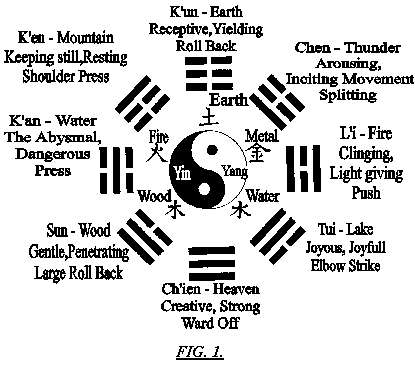Elbow strike/stroke
Interested to hear people's thoughts on elbow (zhou) in Tai Chi. Zhou is said to be one of the 8 energies/powers of Tai Chi Chuan.

If you look at Chen style you see obvious elbow strikes in the forms. E.g.:
But in Yang style, and derivatives, these moves have gone.
I've heard lots of different explanations for why, sometimes it's a reframing of 'elbow' as 'moves involving the elbow' rather than a strike with the elbow. (But if you talk to a Chen person about Zhou, they mean striking with the elbow) Other times it's explained as the move being 'hidden' in the form...
If you are a Yang or derivative, stylist, how do you train 'elbow' in your form, since the overt moves are gone?
It's one of the 8 powers, so presumably quite important. Or is it really? Is that theory just an unnecessary layer of neo-Confucian intellectual elite bullshit plastered over a highly practical art of the common people? Why is "knee" or "foot" or "head" not one of the 8 powers?
What do you think?

If you look at Chen style you see obvious elbow strikes in the forms. E.g.:
But in Yang style, and derivatives, these moves have gone.
I've heard lots of different explanations for why, sometimes it's a reframing of 'elbow' as 'moves involving the elbow' rather than a strike with the elbow. (But if you talk to a Chen person about Zhou, they mean striking with the elbow) Other times it's explained as the move being 'hidden' in the form...
If you are a Yang or derivative, stylist, how do you train 'elbow' in your form, since the overt moves are gone?
It's one of the 8 powers, so presumably quite important. Or is it really? Is that theory just an unnecessary layer of neo-Confucian intellectual elite bullshit plastered over a highly practical art of the common people? Why is "knee" or "foot" or "head" not one of the 8 powers?
What do you think?


 ], you can largely do what you want, elbows up or down.
], you can largely do what you want, elbows up or down.